Mathematical Manipulations: 1000 × Power (1 − 80%) of the Performance for 20% of the Cost?
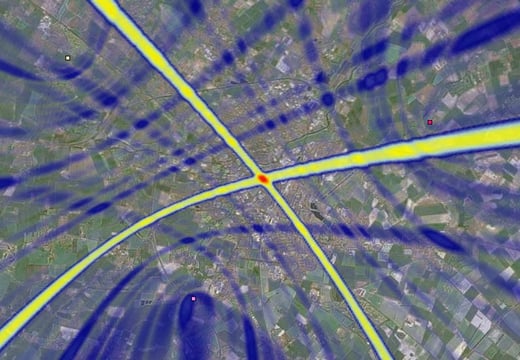
CRFS prides itself on its high-performance RFeye® superhet receivers, so when we heard claims of low-cost spectrum analyzers/Software Defined Radio (SDR) receivers with 80% of the functionality of a high-performance receiver for 20% of the price, our curiosity was piqued. We set out to crunch the numbers and see if this 80%/20% claim has any truth to it.
Noise figure, or Displayed Average Noise Level (DANL), is a key parameter in determining receiver performance. It directly affects the minimum detectable signal and range of the receiver.
Looking at the typical values of DANL for our own RFeye Node and the allegedly better value 80/20 product we obtained the below graph.
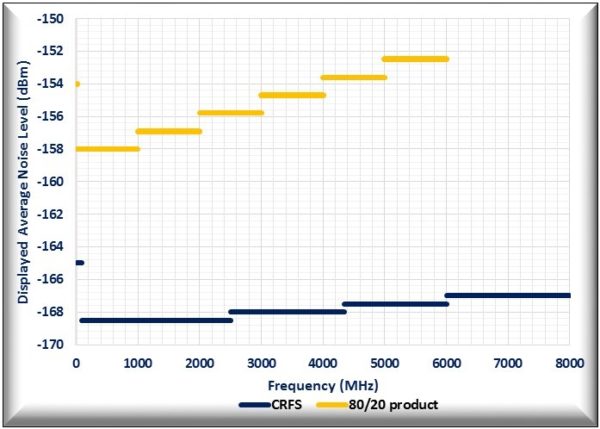
We can see that our receiver noise levels are consistently lower, but it’s just a small fractional difference of 5-10%. This is a relatively small improvement, so the 80/20 product is easily hitting that 80% performance target, right?
Wrong! A noise power of -150 dBm is actually 10 times greater than a noise power of -160 dBm when converted to a standard linear measurement of watts. But how does this translate into receiver coverage, how much further can you ‘see’ with an RFeye receiver for a given set of signal conditions? We can use the DANL value as an indicator of the minimum detectable signal at the receiver (advanced signal processing may allow smaller signals to be detected by both receivers, but using DANL is sufficient for comparative purposes).
Using DANLs, the Friis equation and a dBm to watt conversion, we can derive the below equation for relative coverage area.

Substituting in DANL values across the 9 kHz to 6 GHz range covered by the CRFS and 80/20 receivers (the values shown in the graph above), we find that on average, the 80/20 receiver covers just 5% of the area covered by our product – so not quite 80%.
In order to get the same level of coverage with the lower performance hardware, a much greater density of receivers would be needed. 20% of the cost per receiver is not going to save you money if you need to buy 10 or even 20 times more of them.
Rural terrain or urban buildings may mean that obstacles are sometimes a limiting factor before noise performance comes into play. In this case, relative coverage area may not always be quite so damning of the 80/20 claim, but obstacles aren’t a license to tell customers to sprinkle tens of high noise figure receivers around and hope for the best.
CRFS’s simulation and modeling tools allow the effects of noise figure and terrain obstacles to be tested. To see how noise figure translates to real-world performance, we have generated comparative coverage maps using CRFS’s simulation tools for a frequency of 4 GHz in the South Maricopa Mountains Wilderness – a considerably rugged area (elevation map shown below).
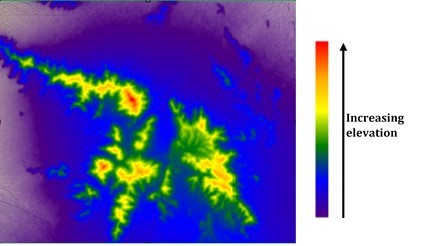
South Maricopa Wilderness elevation map
The coverage maps below show the detection capabilities of the two receivers for a 15 dB 4 GHz signal. This is shown with a blue to red dB intensity scale of power received offset to the noise floor.
In ideal obstacle-free conditions, the predicted coverage for a network using the 80/20 receivers is around 4% of a CRFS network using our RFeye Nodes. The below maps show that even in this rugged terrain, receiver performance, and not obstacles, is the dominant factor in limiting coverage. The 80/20 network covers only about 5% of the area covered by the CRFS network.
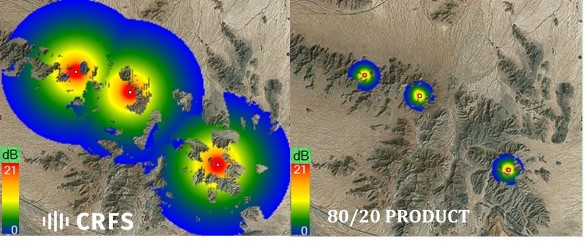
Coverage maps for CRFS and 80/20 product
This kind of difference in performance has huge implications for operational capabilities. The two images below show the clear contrast in the form of single AOA line of bearings for simple single-receiver networks. Both the accuracy of the pink line of bearing and the uncertainty in the blue vector spread emphasize the importance of a high quality, low noise figure receiver for accurate and precise geolocation.
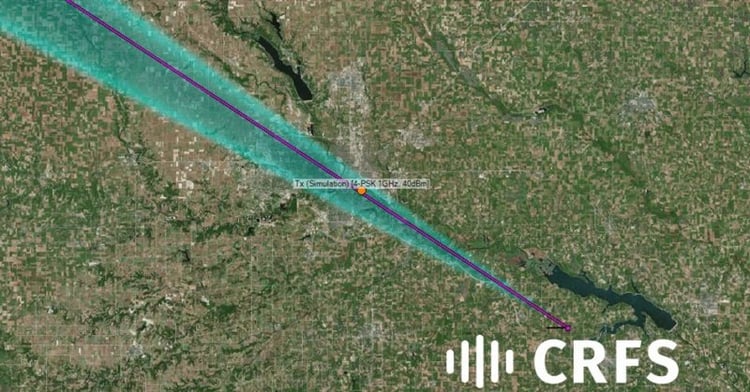
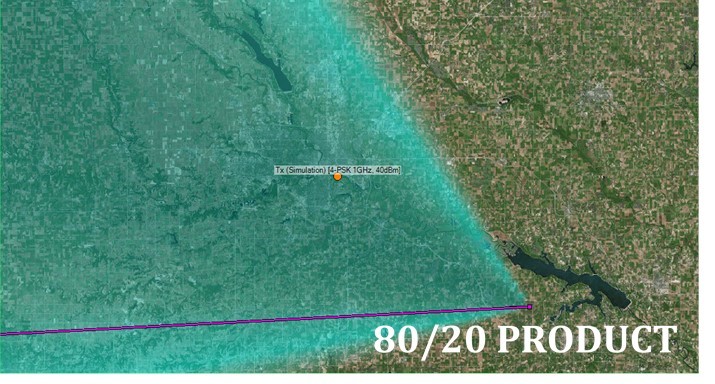
The 80/20 claim has been soundly disproved without even having to factor in other superior performance aspects of RFeye receivers such as phase noise, Spurious Free Dynamic Range (SFDR), sweep speeds and so on. We hope this article has helped emphasize the cost-efficiency of high performance, low noise figure receivers as well as highlighting why datasheets should always be read with a critical eye.
